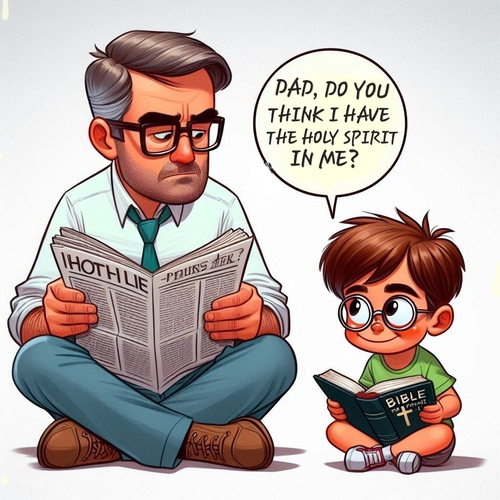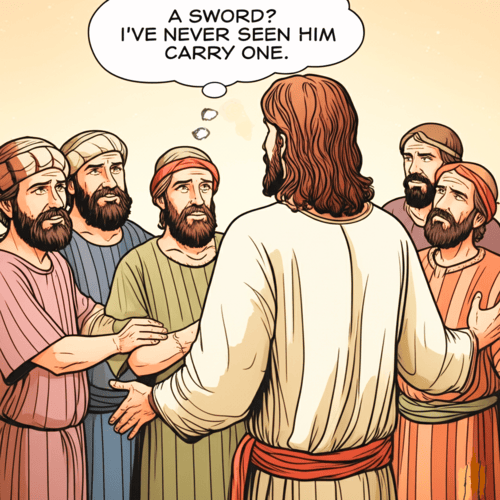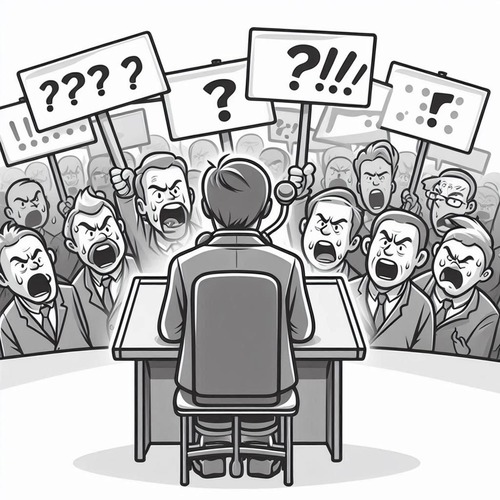Who Wrote 2 Peter? Why Do We Affirm It Was Indeed Peter?
Few questions in New Testament scholarship generate as much heat as the authorship of 2 Peter. Modern critics routinely dismiss it as pseudonymous—a pious fraud written decades after Peter’s death. The epistle faces such sustained attack that even some evangelical scholars have abandoned ship.
But the scholarly consensus isn’t as solid as it appears. While acknowledging legitimate scholarly concerns, the case for Petrine authorship remains not only viable but compelling. The evidence, when examined fairly, points decisively toward the fisherman-apostle as the true author.
THE CRITICAL CHALLENGE: WHY SCHOLARS DOUBT PETER
The assault on Petrine authorship rests on three main pillars.
- Critics point to 2 Peter’s sophisticated Greek vocabulary and literary style. They argue an unschooled Galilean fisherman couldn’t have produced such refined prose. The epistle’s tone and vocabulary also differ markedly from 1 Peter, suggesting different authorship.
- Apparent late dating clues trouble scholars. The author refers to Paul’s letters as “scripture” (3:15-16), seemingly indicating a time when Paul’s writings had achieved canonical status. The epistle also appears to know Jude’s letter and addresses concerns about Christ’s delayed return that critics claim reflect later church struggles.
- Historical difficulties raise eyebrows. Would Peter really call Paul his “beloved brother” given their sharp conflict in Antioch (Galatians 2)? Critics argue that pseudonymous religious literature was common and acceptable in the ancient world, making 2 Peter just another example of this literary convention.
These objections deserve serious consideration. But they’re far from fatal to Petrine authorship.
THE REFORMED RESPONSE: WHY PETER STILL MAKES SENSE
The Secretary Solution: The strongest response to stylistic objections lies in ancient writing practices. Peter explicitly mentions using Silvanus as his secretary for 1 Peter (5:12). Why assume he wrote 2 Peter personally? Ancient authors routinely employed amanuenses—skilled secretaries who could significantly influence a document’s style while faithfully representing the author’s thoughts.
Use of a different secretary explains the stylistic differences between Peter’s epistles. A Galilean fisherman operating in the cosmopolitan world of first-century Christianity for three decades would naturally develop linguistic sophistication and employ educated assistants. The assumption Peter remained forever unschooled reflects modern prejudices about ancient fishermen more than historical reality.
Compelling Internal Evidence: The epistle contains intimate details that ring with authenticity. The author claims eyewitness status at Christ’s transfiguration, providing specific, personal touches: “We were with him on the holy mountain” (1:16-18). Would a forger include such easily disprovable claims if Peter’s associates were still alive?
The author identifies himself as “Simon Peter” (1:1)—an unusual choice for a pseudepigrapher, who would more likely use the respected title “Apostle Peter.” The text also demonstrates intimate knowledge of Jesus’ prediction about Peter’s death (1:14), directly referencing John 21:18-19. These personal elements suggest genuine apostolic authorship.
Theological Continuity: Core themes link both Petrine epistles: emphasis on suffering, hope, holy living, and eyewitness testimony. The Christology aligns perfectly with Peter’s speeches in Acts. The author’s passionate concern for doctrinal purity and pastoral care reflects the heart of the apostle who was told to “strengthen your brothers” (Luke 22:32).
Addressing the Dating Evidence: Paul’s letters could reasonably be called “scripture” during his lifetime or shortly after—the term doesn’t require decades of canonical development. Literary dependence between 2 Peter and Jude could easily run the opposite direction, with Jude borrowing from Peter rather than vice versa.
The concern about Christ’s delayed return fits any period of church history and actually makes more sense coming from an aging apostle confronting his imminent martyrdom. Peter’s evolved relationship with Paul also makes perfect sense—their Antioch conflict occurred early in their ministries, leaving decades for reconciliation and mutual respect.
The Pseudonymity Problem: Here’s where the critical theory faces its biggest challenge: the early church consistently rejected pseudonymous works when discovered. The inclusion of 2 Peter in the canonical discussions, despite awareness of authorship questions, suggests early confidence in its authenticity.
More troubling for the pseudonymity theory is the epistle’s own content. The author passionately condemns false teachers and deceptive practices. Would someone writing under a false name simultaneously denounce deception? The moral contradiction seems insurmountable.
ALTERNATIVE EXPLANATIONS MAKE BETTER SENSE
Rather than resorting to pseudonymity, simpler explanations account for the epistle’s difficulties. A change in secretary explains stylistic differences. Peter’s decades of ministry development accounts for sophisticated theology. Late-life composition, shortly before his martyrdom around AD 64-67, explains the urgency and comprehensive references to Paul’s ministry.
The dialectical relationship with false teachers naturally explains some unusual vocabulary as Peter adopts and refutes their terminology—a common apologetic technique still used today.
THE REFORMED CONFIDENCE
While scholarly debate continues, the evidence supports traditional attribution more strongly than critics admit. The early church’s careful scrutiny of contested books, combined with 2 Peter’s ultimate canonical inclusion, testifies to apostolic authenticity.
Reformed Christians have particular reason for confidence. Our commitment to Scripture’s self-testimony means taking the epistle’s authorship claims seriously rather than explaining them away. When 2 Peter says it comes from “Simon Peter, a servant and apostle of Jesus Christ,” we have good reason to believe it.
The fisherman-turned-rock had decades to grow, learn, and employ skilled assistants while maintaining his authentic apostolic voice. The evidence, fairly weighed, still points to Peter’s boat rather than some anonymous forger’s desk.
WHO WROTE 2 PETER? RELATED FAQs
What did the Reformation fathers think about 2 Peter’s authorship? John Calvin accepted Petrine authorship while acknowledging the epistle’s stylistic differences from 1 Peter. In his commentary, he argued the Holy Spirit could inspire different literary styles through the same apostle for different purposes. Calvin emphasised the epistle’s apostolic authority and doctrinal content mattered more than resolving every stylistic question.
- How do modern Reformed scholars defend Peter’s authorship? Thomas Schreiner, in his commentary on 1-2 Peter and Jude, argues the secretary hypothesis best explains stylistic differences while maintaining apostolic authorship. He emphasises Peter’s decades of ministry would naturally result in theological sophistication and that the epistle’s eyewitness claims (especially the Transfiguration account) strongly support authenticity. Schreiner also notes the moral problem of pseudonymity—writing against false teaching under a false name—remains insurmountable for critics.
- What do scholars say about the canonisation of 2 Peter? Michael Kruger, a leading Reformed scholar on canon formation, argues 2 Peter’s eventual canonical acceptance despite early questions actually supports its authenticity. The early church was remarkably careful about rejecting pseudonymous works when discovered, yet 2 Peter survived this scrutiny. Kruger notes the church’s hesitation wasn’t about authorship per se, but about distinguishing it from other Petrine literature circulating at the time.
How do the themes of 1 and 2 Peter actually connect despite their different focuses? Both epistles share core themes of the second coming, holy living, suffering for righteousness, and the authority of apostolic witness. However, 1 Peter addresses external persecution from hostile society, while 2 Peter tackles internal corruption from false teachers. This complementary focus—external trials versus internal threats—reflects the comprehensive pastoral care expected from an apostle. The theological continuity between both epistles supports common authorship under different circumstances.
- Why does 2 Peter seem to know about Paul’s letters being collected? The reference to Paul’s letters (3:15-16) doesn’t necessarily indicate a late canonical collection. Paul’s letters were being circulated and copied within his lifetime, and Peter could easily have encountered multiple Pauline epistles during their overlapping ministries. The phrase “all his letters” could refer to letters Peter had personally seen rather than a complete Pauline corpus. Given Peter and Paul’s reconciled relationship, sharing letters between apostolic networks would also be natural.
- How does the Transfiguration account in 2 Peter 1:16-18 support Peter’s authorship? The Transfiguration details in 2 Peter show remarkable restraint and authenticity compared to later apocryphal accounts. Peter mentions being “on the holy mountain” and hearing the divine voice but doesn’t embellish with fantastical details that mark pseudonymous literature. The phrase “we were with him” naturally reflects Peter’s presence alongside James and John (Matthew 17:1-8). A forger would likely have added more dramatic elements to impress readers.
What about the style—could a fisherman really write such sophisticated Greek? Modern assumptions about ancient fishermen often reflect class prejudices rather than historical reality. Peter operated in multilingual Galilee, had decades of ministry experience, and likely employed educated secretaries (as explicitly mentioned in 1 Peter 5:12). Successful fishermen in Jesus’ time were often businesspeople with broader education than commonly assumed. Additionally, as Calvin suggested, the Holy Spirit’s inspiration could certainly elevate literary expression while preserving the author’s authentic voice and perspective.
WHO WROTE 2 PETER? OUR RELATED POSTS
Editor's Pick

‘What Sorrow Awaits You Who Are Rich…’: What Does Jesus Mean?
The words hang in the air like a sword over comfortable Christianity: “What sorrow awaits you who are rich, for [...]

Does the Bible Clearly Teach the Deity of Christ?
Critics argue Jesus never explicitly claimed to be God. Others suggest the doctrine emerged centuries later through philosophical speculation. But [...]

The Holy Spirit’s Indwelling: How Can I Be Sure I Have It?
“Am I truly saved? How can I know for certain that the Holy Spirit lives within me?” If you’ve wrestled [...]

Did Mary Remain a Virgin? A Biblical Case Against Perpetual Virginity
The question of Mary’s perpetual virginity has divided Christians for centuries. While Catholic and Orthodox traditions affirm Mary remained a [...]

Is Occam’s Razor a Compelling Argument Against Theism?
WHY THE ARGUMENT ACTUALLY POINTS TO GOD Picture this: You're in a coffee shop debate with a confident sceptic [...]

Is the Doctrine of Justification in the Old Testament?
WAS PAUL INVENTING SOMETHING NEW OR REVEALING SOMETHING ANCIENT? Picture this scene: You’re discussing faith with a thoughtful sceptic who [...]

How God Reveals Himself to Us: General and Special Revelation
Every human heart carries an undeniable longing to know ultimate truth—to understand our place in the universe and the longing [...]

Doctrine of God and Bible Interpretation: Are The Two Connected?
Picture this: Two seasoned pastors read the same verse about God's sovereignty and human responsibility. One concludes God determines all [...]

What Did Jesus Mean: ‘I Bring Not Peace But a Sword’?
Jesus’ statement may sound perplexing to us at first read: "Do not think that I have come to bring peace [...]

The Beatitudes: The Nine Marks of Those Jesus Calls Blessed
When Jesus climbed that hillside in Galilee and began to speak, He turned the world's understanding of blessing upside down. [...]
SUPPORT US:
Feel the Holy Spirit's gentle nudge to partner with us?
Donate Online:
Account Name: TRUTHS TO DIE FOR FOUNDATION
Account Number: 10243565459
Bank IFSC: IDFB0043391
Bank Name: IDFC FIRST BANK






